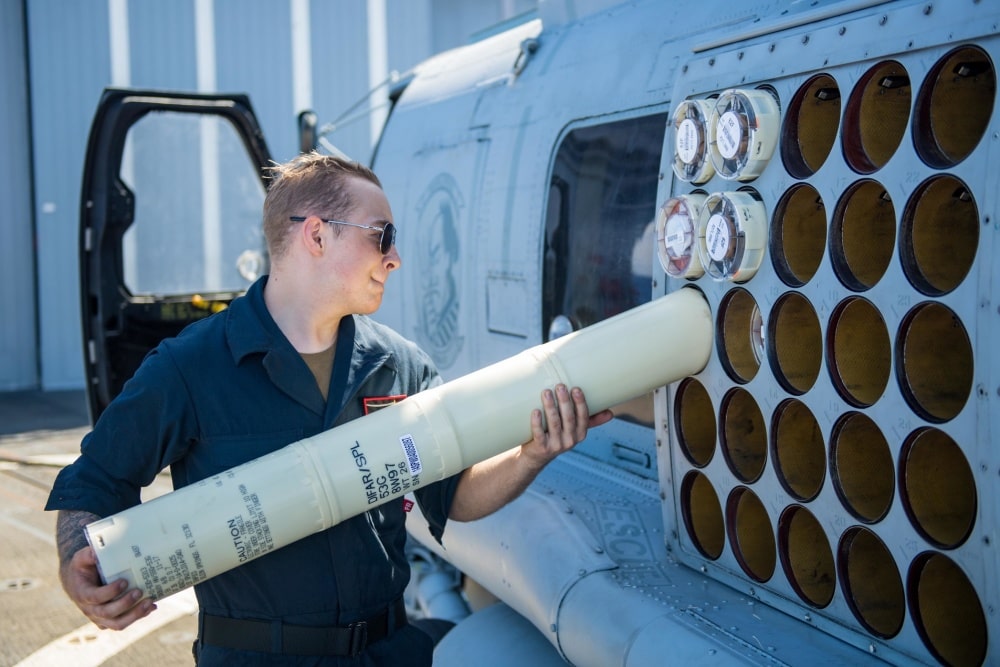
What is a Acoustic buoy?
A acoustic buoy is an acoustic sensor device designed to detect underwater sound waves, including those made by submarines. Deployed from aircraft or ships for anti-submarine warfare (ASW), they are parachute-equipped float kits that descend slowly through the water column. Once in the water, acoustic buoys transmit detected audio data via radio back to the deploying platform, where it can be analyzed to localize and track the detected submarines.
Construction and Components
A typical acoustic Sonobuoy consists of a cylindrical float housing the electronics and antenna, attached to a small parachute. Inside the housing is a hydrophone or array of hydrophones submerged just below the surface to detect sound waves transmitted through water. Other components include radio transmitters to send detected audio back to the aircraft, batteries to power electronics, flotation modules, and a braided strength member to prevent tangling of the parachute. Modern digital acoustic buoys also contain embedded computers for signal processing.
Deployment Methodology
Sonobuoy are usually deployed from anti-submarine warfare (ASW) aircraft like P-3 Orions, S-3 Vikings or maritime patrol aircraft. They can also be launched from ships. An aimpoint is chosen by visualizing areas where submarines may hide, such as thermal layers or along shipping lanes. Acoustic buoys are loaded in launch tubes and ejected out the rear of the aircraft by pneumatic or explosive charges. The small parachutes slowly lower them through the air and water column to desired depths near targets.
Detecting Sound Sources with an Array
To localize a sound source, multiple acoustic buoys are dropped around an area to form an array. Their hydrophones continuously listen for signatures like shipping propellers or submarine reactors. The time delay of a sound wave hitting each hydrophone is used to triangulate the source location through an evaluation of the differences in arrival times and angles of paths. This process is known as hyperbolic navigation and allows sounds to be traced back to their point of origin underwater in near real-time.
Data Transmission and Analysis
Each acoustic buoy radios its detected audio frequency signals back independently to the deploying aircraft or ship. On board, passive ranging signals are combined and overlaid on visual plots through an integrated console called a tactical thermal imager (TTI). Signal processing algorithms then compare the time-referenced recordings between acoustic buoys to determine the location of the detected submarine through triangulation. The position data can be used to direct counter-detection efforts like dropping additional acoustic buoys or deploying anti-submarine torpedoes or missiles.
Operational Challenges
Conducting effective ASW with Sonobuoy presents many challenges. Environmental factors like temperature layers, hydrodynamics, and sea-state noise limit their detection ranges. Biologic sounds from marine animals can mask true acoustic contacts. Depth control during deployment and contact tracking are difficult. Environmental acoustics are constantly changing, requiring dynamic repositioning of arrays. Submarine evasion tactics complicate localization too. Despite these issues, acoustic buoys are a critical part of global undersea surveillance efforts due to their flexible deployment and real-time monitoring abilities. Modern networked digital acoustic buoys with advanced signal processing help overcome some limitations.
Future Technologies
Sonobuoy technology continues to progress. New acoustic buoys such as the Advanced Deployable System (ADS) integrate autonomous underwater vehicles (AUVs) to increase array mobility and coverage. Distributed self-configuring networks of acoustic buoys aim for collaborative signal and information sharing. Miniaturization allows larger numbers to be deployed. Cognitive algorithms may one day eliminate need for human-involved data analysis. Revolutionary concepts like using quantum-processed hyperbolic positioning could drastically improve localization accuracy too. Still, acoustic buoys will undoubtedly remain a core tool for passive undersea monitoring and tracking applications for many years to come.
Get More Insights On Sonobuoy